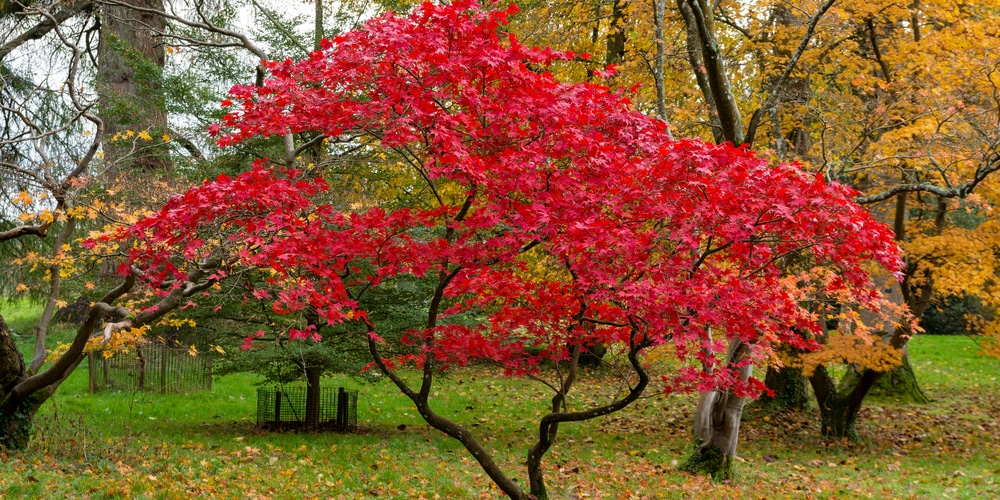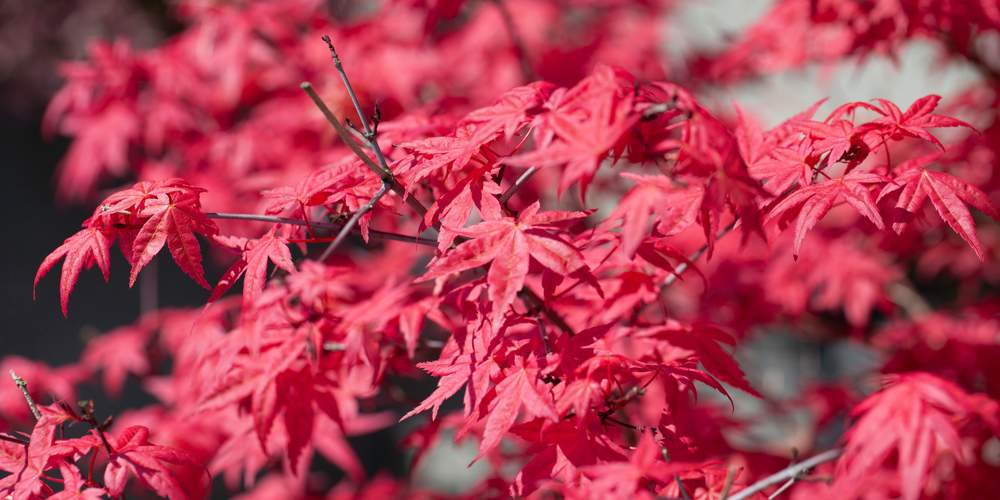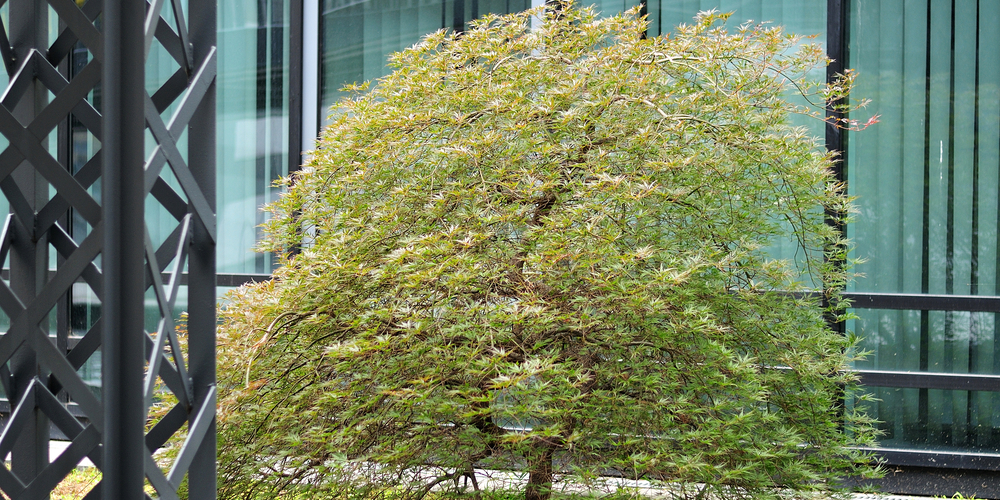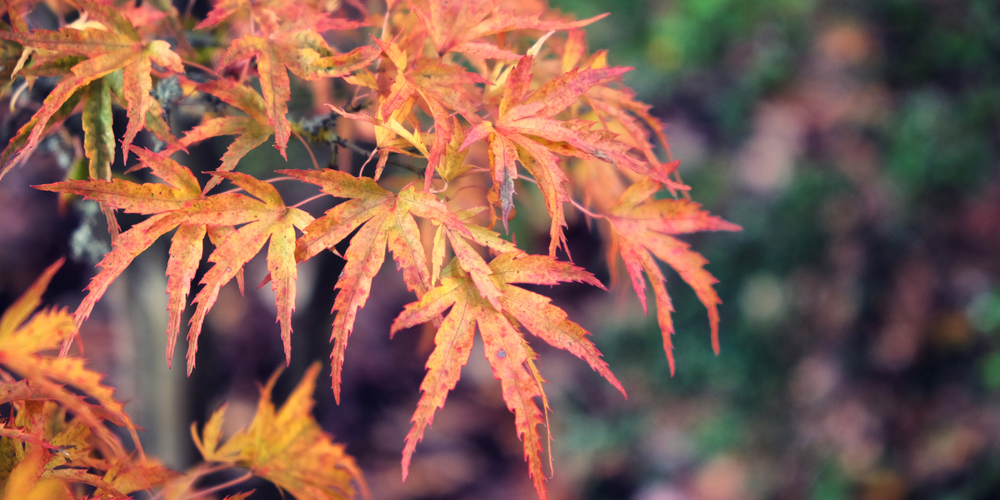One thing we all look forward to in autumn is the changing colors of leaves. It isn’t autumn if we don’t get to see the dark green leaves turn into beautiful colors of red, orange, and gold.
The Japanese Maple tree has the most spectacular autumn color. In fact, this tree is remarkable for its colorful foliage. Its green leaves turn into brilliant colors of red, orange, yellow, pink, purple, gold, and bronze in the fall. Some varieties can even give you red leaves even before autumn, like the Beni Maiko.
Since Japanese maple is native to Japan, Korea, and China, it grows well in cold climates. Does this mean you can’t grow Japanese maple trees in the southern region of the US? Thankfully, there are Japanese maple varieties that can survive in zone 9. Keep reading to learn more about Japanese maple zone 9.
Can Japanese maple survive in zone 9?

The states of Florida, Texas, Georgia, South Carolina, Arizona, California, Hawaii, and Utah all have regions that belong in zone 9. You know very well that it’s warm all year round in these states.
Temperatures in winter rarely go as low as 20 degrees Fahrenheit and, temperatures in summer can go as high as 100 degrees Fahrenheit. The hot season is long too, usually starting in May and lasting through September. This means that high temperatures can last for 4 months. For some plants, this is favorable, but for Japanese Maple, it’s not.
The climate in zone 9 leads to two major problems in growing Japanese maple trees. The first one is due to the short winter prevailing in the southern region of the US. Short winters mean an inadequate period of dormancy for the Japanese maple tree.
The period of dormancy is when trees drop their leaves and go into a resting period in winter to prepare again for growth in spring. The second problem is the hot and long summers. The heat of the sun intensifies the colors of the Japanese maple trees’ leaves.
However, too much sunlight can lead to leaf scorch or sun-burnt leaves. Most Japanese maple trees are cold-tolerant, but only a few are heat-tolerant. The hot sun and dry winds in zone 9 can injure the Japanese maple tree. Year-long warm temperatures, strong sunlight, dry winds, salt, and alkaline soil can also be a problem in growing Japanese maple trees in zone 9.
There are ways to help your Japanese Maple tree survive in zone 9, so don’t lose hope yet. Japanese Maple trees can still grow and survive in the climate of the southern region of the US.
To avoid the scorching afternoon sun, especially in summer, plant the saplings on the north and east sides of your house. This location will shade them from the strong and too much sunlight of zone 9.
If you want, you can also grow a Japanese Maple tree in a container so you can easily move it away from the sun. You can also insulate your tree by covering it with 3 to 4 inches of mulch but keep it far away from the tree trunk. But, the most effective and easiest way to grow Japanese maple trees in zone 9 is to find a Japanese maple tree variety that is heat-tolerant.
Japanese Maple trees that do well in zone 9
You can grow Japanese Maple trees in zone 9 but with the right variety. Since the hot and long summer can inhibit you from having Japanese Maple trees in your yard, you have to choose a variety that is heat-tolerant. Green varieties are less susceptible to leaf scorch, so choose those. Here are some Japanese maple tree varieties that can survive the high temperatures in zone 9.
1. Glowing Embers
The Glowing Embers tree can not only tolerate heat, but it can also tolerate humidity, drought, full sun, and poor soil. No doubt, this Japanese Maple tree can survive the climate of zone 9. This tree has finely-toothed leaves that are green in the summer, but when fall comes, these leaves will turn into a combination of glowing red, orange, purple, and yellow.
2. Fireglow
The Fireglow Japanese Maple tree is hardy in zones 5 to 9, which means it is born to withstand the temperatures of zone 9. Fireglow is tough enough to tolerate the scorching afternoon sun that is typical in zone 9. When you plant Fireglow in a hot, sunny location, it will even give you fire-red leaves in the autumn that are free of leaf scorch.
3. Seiryu
Seiryu means “Blue-Green Dragon,” and this Japanese Maple tree lives up to its name because it can withstand the high temperatures in zone 9. This tree thrives well in USDA hardiness zones 5 to 9. Seiryu is a medium-sized deciduous shrub. In spring, Seiryu’s leaves are lime-green in color with reddish tips. When autumn comes, the leaves turn gold, yellow, and orange.
4. Kamagata
The Kamagata Japanese Maple tree can grow up to 6 feet tall, which makes it ideal for bonsai growing or even if you want to grow it in pots or containers. The leaves of Kamagat offer a spectacular show every season. In spring, the leaves are lime green with a reddish tint. In summer, the leaves become light green. In the fall, the leaves become brilliant yellow and orange before becoming deep red in color.
Japanese Maple Zone 9: Conclusion
Witnessing the colorful foliage of Japanese Maple trees in the southern region of the US is also a possibility. Do not let the heat and too much sunlight in zone 9 stop you from having Japanese maple trees in your garden.
There are hot-weather Japanese Maple trees that grow well even under the scorching afternoon sun. Just make sure to provide your chosen heat-tolerant Japanese Maple tree variety with its own growth requirements and you can expect a beautiful autumn tree in your yard.
Related Article: Japanese Maple Growth and Care Guide



